06-30-2025, 12:10 AM
The bucket is one of the most important attachments on an excavator, with many different types and shapes designed for various functions. Choosing the right bucket can significantly enhance work efficiency. So, how do you pick the perfect bucket for your needs? Here are some practical tips to help you make an informed decision.
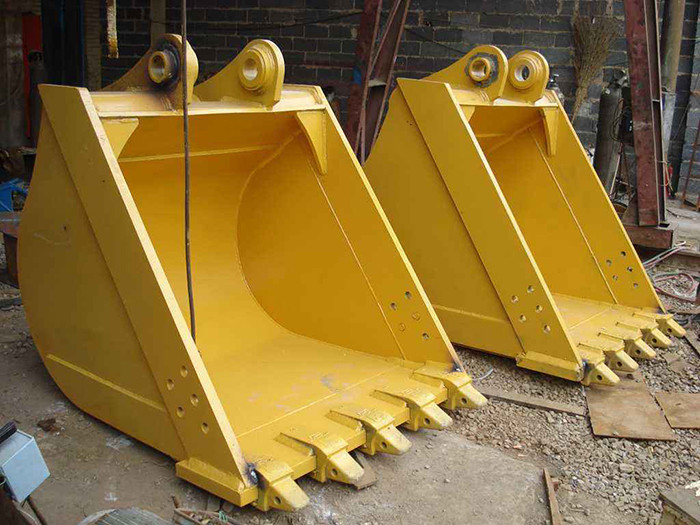
1. How to Choose the Structure and Material?
Excavator buckets (also known as digging buckets) are generally divided into two types based on their working method: standard buckets and reverse buckets. In this article, we focus on the commonly used reverse bucket. The structure of a reverse bucket is relatively simple and mainly consists of the following components:
When it comes to materials, high-quality buckets are generally made of Q345B and HQ60 steel plates. Some premium buckets may use Swedish Hardox steel, which is more expensive. It's important to avoid buckets made primarily from A3 steel, particularly for the tooth seat plate and bottom plate, as these parts experience frequent friction and A3 steel wears out quickly.
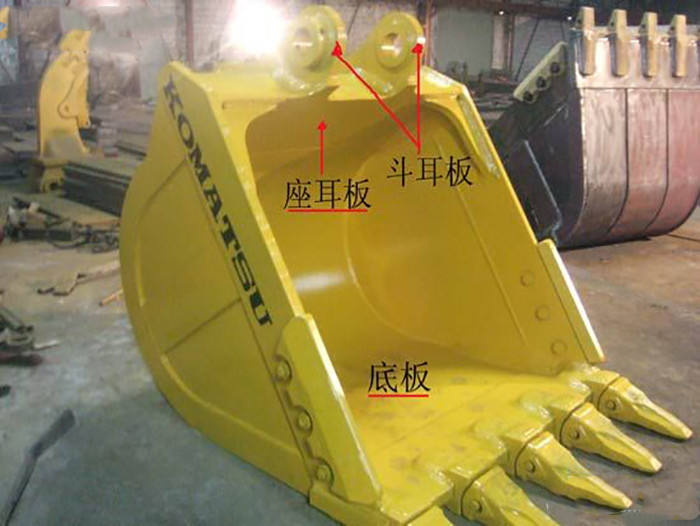
2. How to Assess the Durability of the Bucket?
The most vulnerable parts of the bucket are the tooth seat plate and the connection between the bucket ear plate and the back plate. While the design of the tooth seat plate has less impact, the welding technique and material choice are critical for durability. To improve stability, the back plate should be designed to be longer, which increases the weld area and strengthens the connection between the bucket ear plate and the bottom part.
Additionally, welding quality significantly affects the bucket's strength. When choosing a bucket, check the number, quality, and alignment of the welds to ensure reliability.
Looking at the bucket from the front, you’ll notice that the opening is typically rectangular. A rectangular shape is less stable, so high-quality buckets reinforce the internal structure by adding four corner supports. Similarly, other parts, such as the bucket ear plates, can also include reinforcement ribs to further strengthen the design.
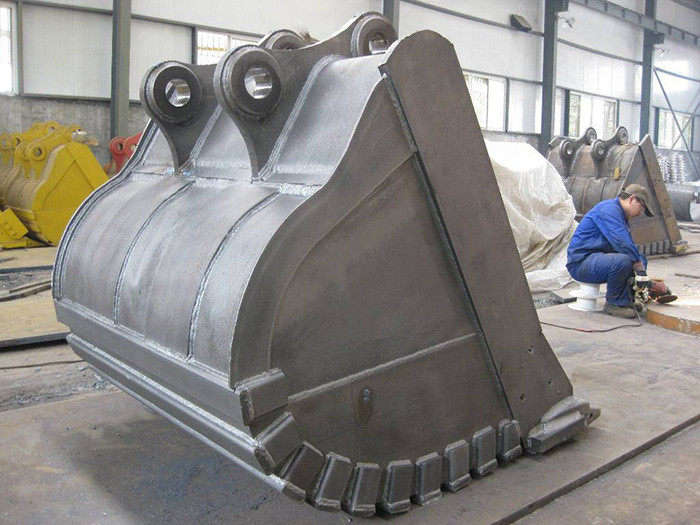
3. How to Select Bucket Attachments?
Excavator buckets have several attachments that often need replacing, including bucket ear covers, corner wear plates, and bucket teeth. Some manufacturers may use substandard attachments to reduce costs, so it’s essential to carefully inspect these parts during the purchasing process.
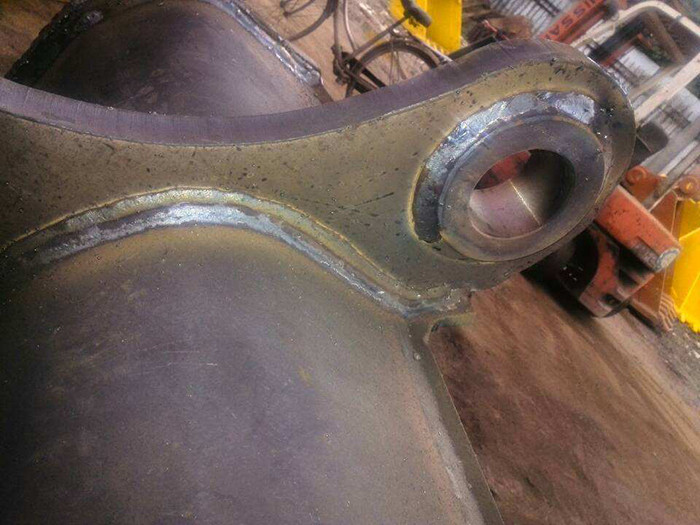
By understanding the structure, materials, durability, and attachment selection standards for excavator buckets, you can make a more informed choice, increase work efficiency, and extend the life of your equipment.
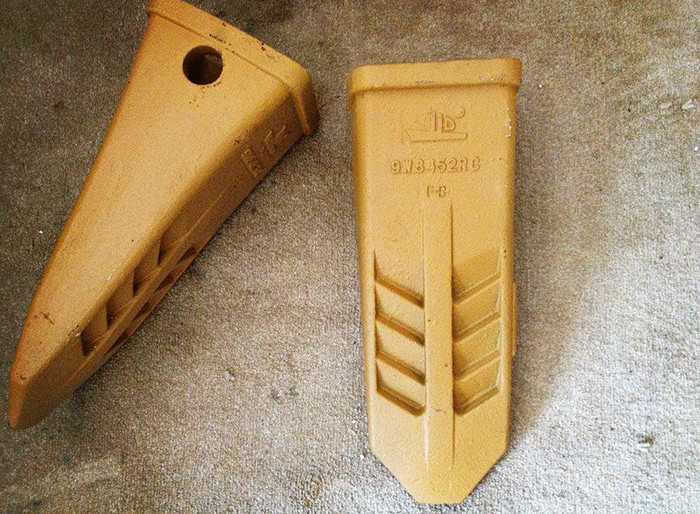
1. How to Choose the Structure and Material?
Excavator buckets (also known as digging buckets) are generally divided into two types based on their working method: standard buckets and reverse buckets. In this article, we focus on the commonly used reverse bucket. The structure of a reverse bucket is relatively simple and mainly consists of the following components:
- Tooth seat plate
- Bottom plate
- Side plate
- Wall plate
- Mounting ear plate
- Back plate
- Bucket ears
- Bucket ear cover
- Bucket teeth
- Tooth seat
- Guard plate or bucket corner
When it comes to materials, high-quality buckets are generally made of Q345B and HQ60 steel plates. Some premium buckets may use Swedish Hardox steel, which is more expensive. It's important to avoid buckets made primarily from A3 steel, particularly for the tooth seat plate and bottom plate, as these parts experience frequent friction and A3 steel wears out quickly.
2. How to Assess the Durability of the Bucket?
The most vulnerable parts of the bucket are the tooth seat plate and the connection between the bucket ear plate and the back plate. While the design of the tooth seat plate has less impact, the welding technique and material choice are critical for durability. To improve stability, the back plate should be designed to be longer, which increases the weld area and strengthens the connection between the bucket ear plate and the bottom part.
Additionally, welding quality significantly affects the bucket's strength. When choosing a bucket, check the number, quality, and alignment of the welds to ensure reliability.
Looking at the bucket from the front, you’ll notice that the opening is typically rectangular. A rectangular shape is less stable, so high-quality buckets reinforce the internal structure by adding four corner supports. Similarly, other parts, such as the bucket ear plates, can also include reinforcement ribs to further strengthen the design.
3. How to Select Bucket Attachments?
Excavator buckets have several attachments that often need replacing, including bucket ear covers, corner wear plates, and bucket teeth. Some manufacturers may use substandard attachments to reduce costs, so it’s essential to carefully inspect these parts during the purchasing process.
- Bucket Ear Covers
Originally, bucket ear covers were cast, but due to their lack of toughness, they would often break during work. Today, most manufacturers use 45# steel to make steel ear covers, which are much more durable. Even if they crack, they can be welded and repaired.
- Corner Wear Plates and Bucket Teeth
Corner wear plates and bucket teeth primarily bear the brunt of impact and wear, so they must have high wear resistance and hardness. These parts are typically made from high-carbon steel. To check the quality of cast parts, a simple method is to tap on them. High-quality castings produce a crisp sound, while low-quality ones have a dull, muted sound.
By understanding the structure, materials, durability, and attachment selection standards for excavator buckets, you can make a more informed choice, increase work efficiency, and extend the life of your equipment.




